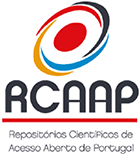Call for papers issue 23
Thematic dossier:
“Soup kitchens and social assistance in the 19th and 20th centuries: Spaces and foodscapes of the working world"
Scientific coordination:
Leonor A. Plácido de Medeiros
Universidade NOVA de Lisboa, Portugal
Philip Carstairs
Independent researcher, United Kingdom
The call for articles for the Thematic Dossier “Soup Kitchens and Social Assistance in the 19th and 20th Centuries: Spaces and Landscapes of the Working World” is open until July 31, 2024.
At the end of the 19th century, the vigorous advancement of industrialization and urban growth brought to the cities a time of profound transformations, whether on an economic, social, spatial, or environmental level, among others. This scenario was characterized by the emergence and expansion of a significant urban working class, which settled in densely populated neighborhoods, facing challenging, precarious, and unhealthy living conditions. In response to this reality, a new approach to food assistance emerged, essential to meet the basic needs of a growing population, often deprived of adequate food resources.
This movement is part of the broader framework of philanthropy and social assistance, which has been a continuous topic of debate and reform in many Western countries. It is within the framework of philanthropy that numerous support institutions were created, both secular and religious, which at the end of the 19th century acquired a more structured and complex approach to meet social needs. These ideas took shape in the form of kitchens and food assistance points, strategically located near working-class neighborhoods and industrial areas.
However, the role of these institutions transcended mere food provision. They were also vital elements in shaping the social and urban landscape, reflecting and responding to the socioeconomic complexities of that era. In addition to fulfilling a practical function of assistance in critical periods, these places also served as a tangible reminder of the existence of individuals in need. The reading and study of these spaces, particularly in terms of operation, aesthetics, and location, highlights the multidimensionality of the soup kitchens and food assistance centers, not only as entities that mitigated an immediate need but also as spaces that reflected and influenced the social and urban fabric of the time.
This issue of Cadernos do Arquivo Municipal seeks to analyze in an interdisciplinary way both the food assistance structures of this era and their human, territorial, and social framing, studied from various perspectives, from history to architecture, from the specific site to the social landscape and territory, namely:
1. Historical analysis of soup kitchens and other food assistance places as social assistance institutions.
2. The role of food assistance structures in the social and urban fabric of industrial cities.
3. The impact of industrial transformations on food supply and access to products.
4. The architecture, design, and functioning of food assistance structures and how they reflect the needs and values of the time.
5. Case studies and comparative perspectives between different regions or countries.







